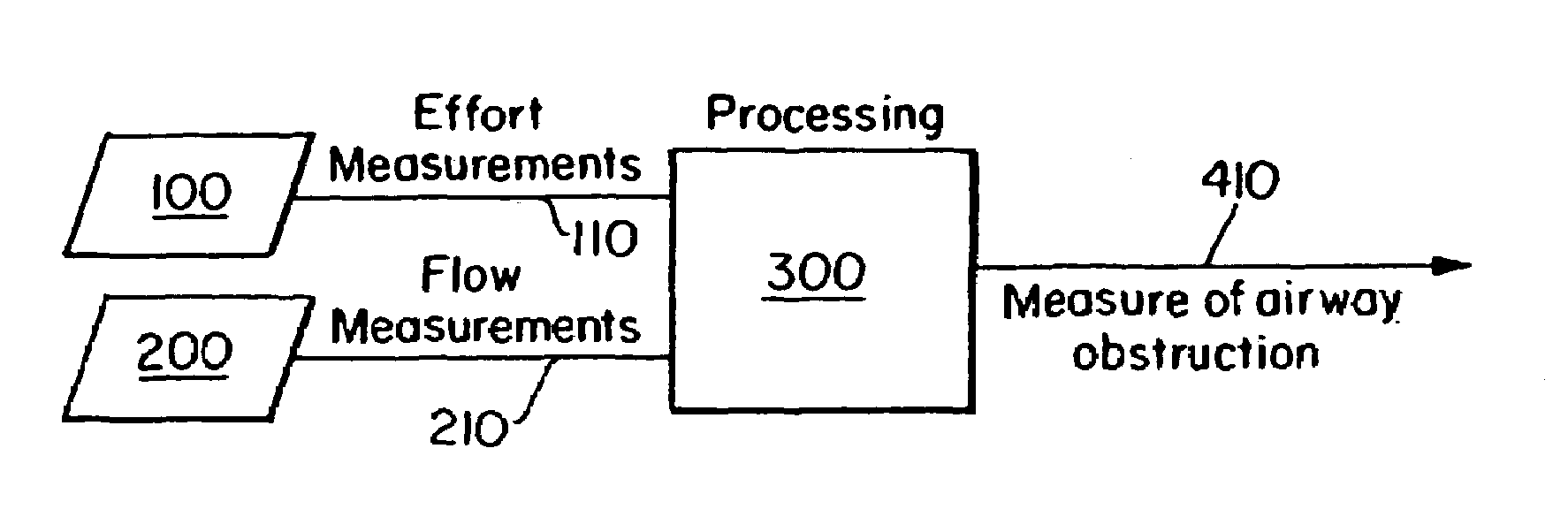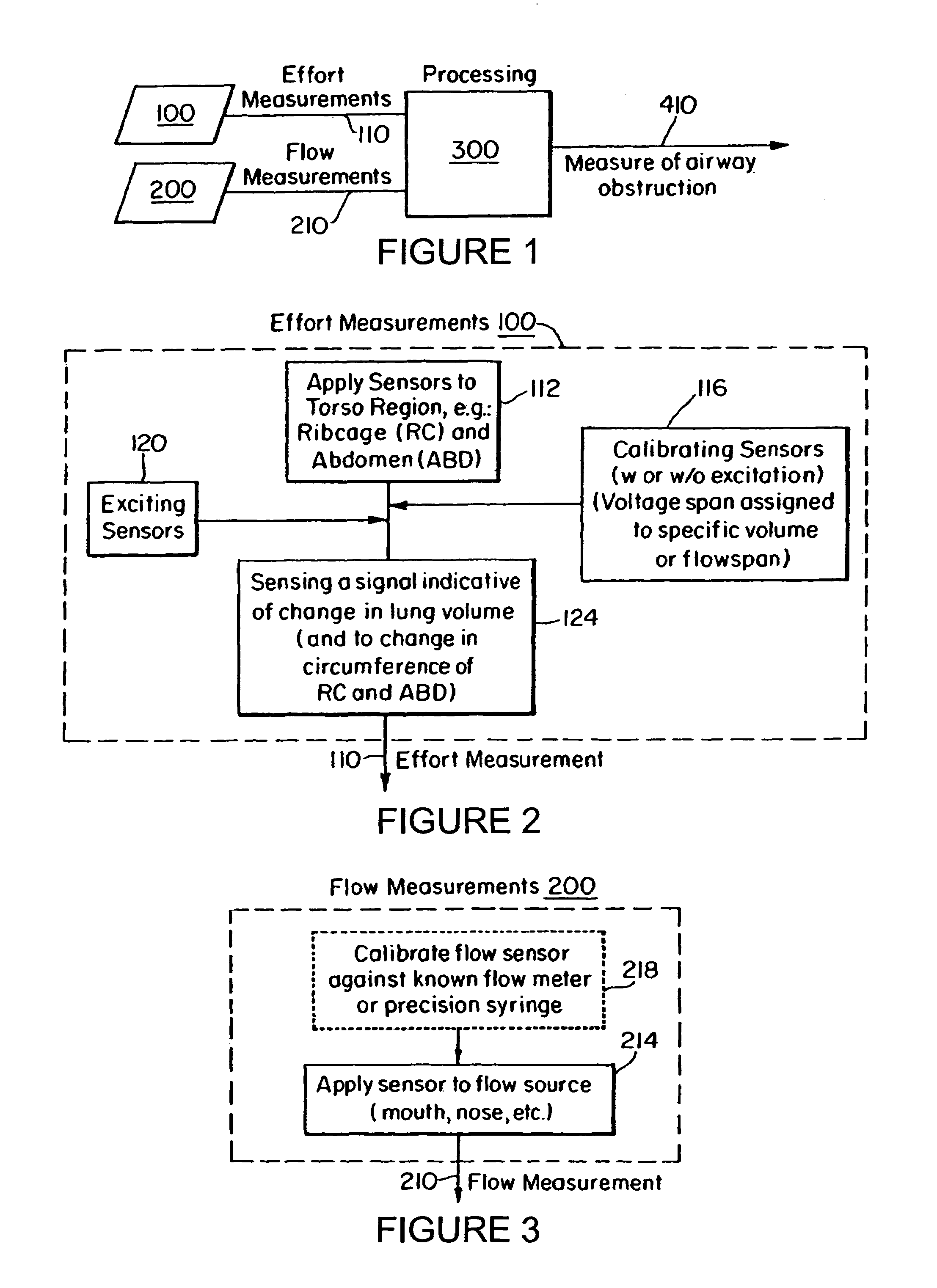System for measuring respiratory function
a technology for respiratory function and system, applied in the field of medicine, can solve the problems of objectionable to both humans and animals, unable to be used as portable field tests, and not typically used classes of physiologic measures, and achieve the effect of convenient portability of the apparatus and convenient transportation by the user
- Summary
- Abstract
- Description
- Claims
- Application Information
AI Technical Summary
Benefits of technology
Problems solved by technology
Method used
Image
Examples
Embodiment Construction
[0087]The present invention is directed to systems and methods for measuring respiratory function of subjects by measuring gas compression or expansion and airflow resistance by a combination of external flow sensors and direct measures of airflow. The external flow sensors measure effort required to breathe, which includes an active work component and a passive work component indicative of the passive recoil of the lung, diaphragm and chest wall during exhalation and are hereinafter referred to as effort or EFS signals or waveforms.
[0088]Referring to the drawings, FIG. 1 is a flow chart that describes the system for measuring respiration function in accordance with the present invention. Essentially signals 110 indicative of the effort required to breathe by a subject are obtained using an external flow sensor, along with signals 210 indicative of the uncompressed airflow in the respiratory system of the subject. The two signals are processed in processor 300 and a third signal 410...
PUM
 Login to View More
Login to View More Abstract
Description
Claims
Application Information
 Login to View More
Login to View More - R&D
- Intellectual Property
- Life Sciences
- Materials
- Tech Scout
- Unparalleled Data Quality
- Higher Quality Content
- 60% Fewer Hallucinations
Browse by: Latest US Patents, China's latest patents, Technical Efficacy Thesaurus, Application Domain, Technology Topic, Popular Technical Reports.
© 2025 PatSnap. All rights reserved.Legal|Privacy policy|Modern Slavery Act Transparency Statement|Sitemap|About US| Contact US: help@patsnap.com



